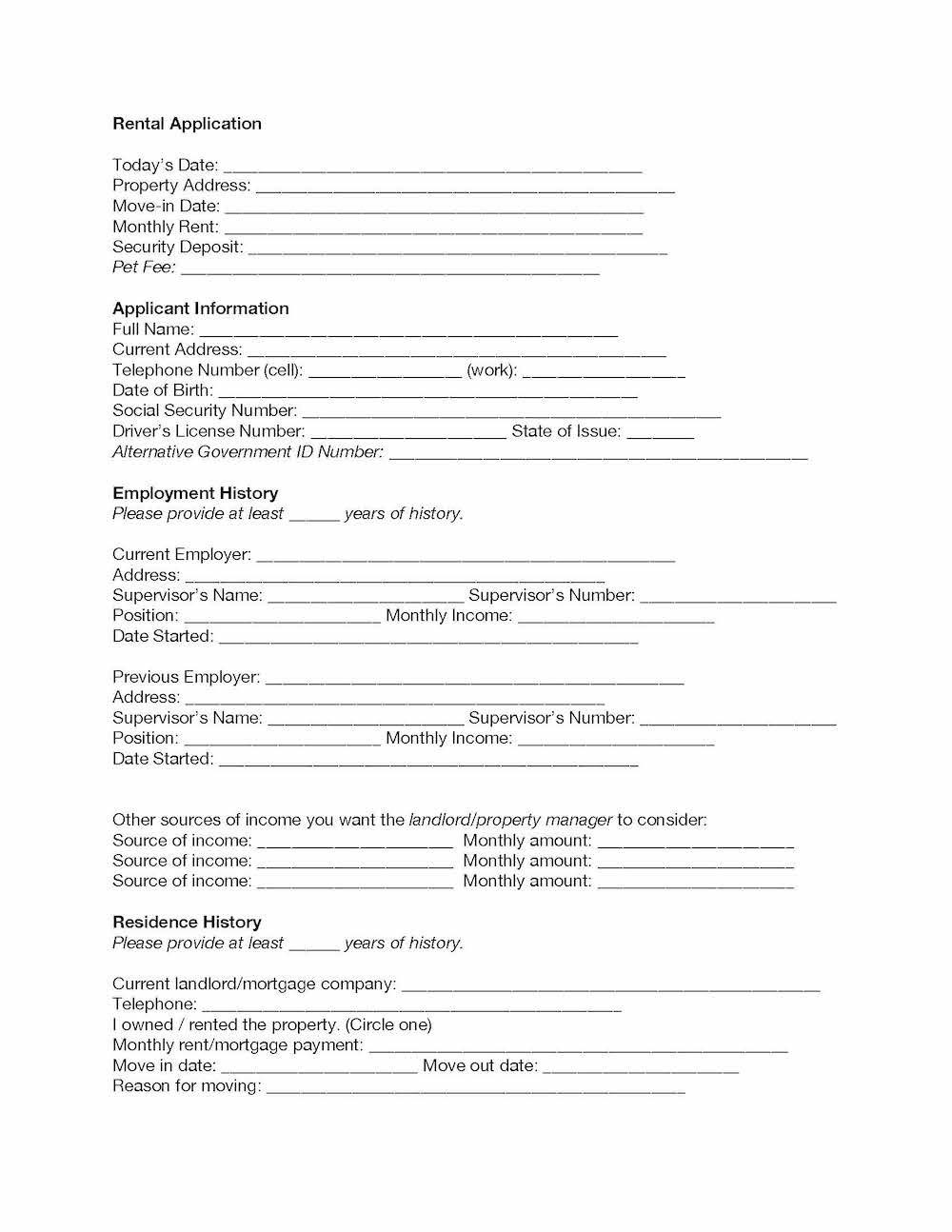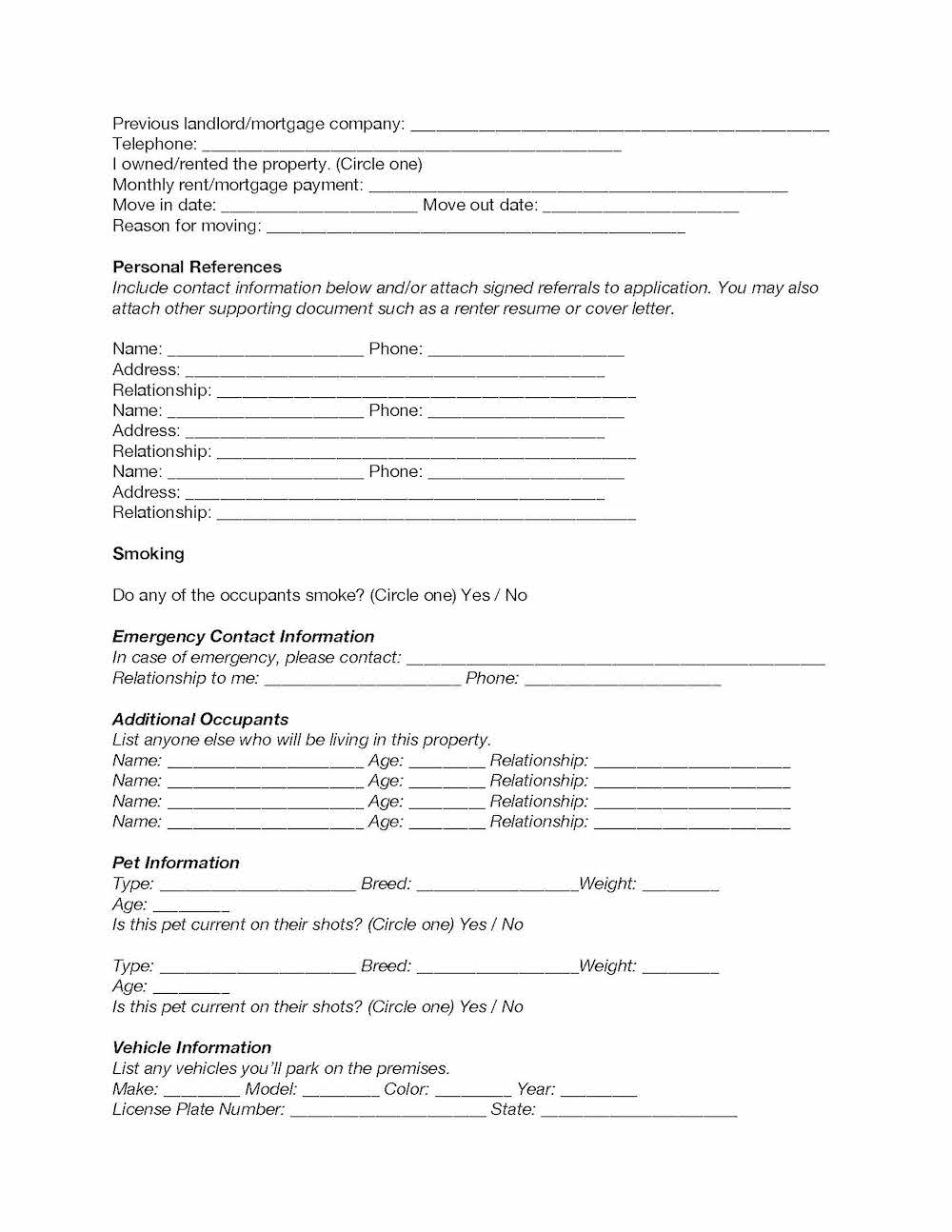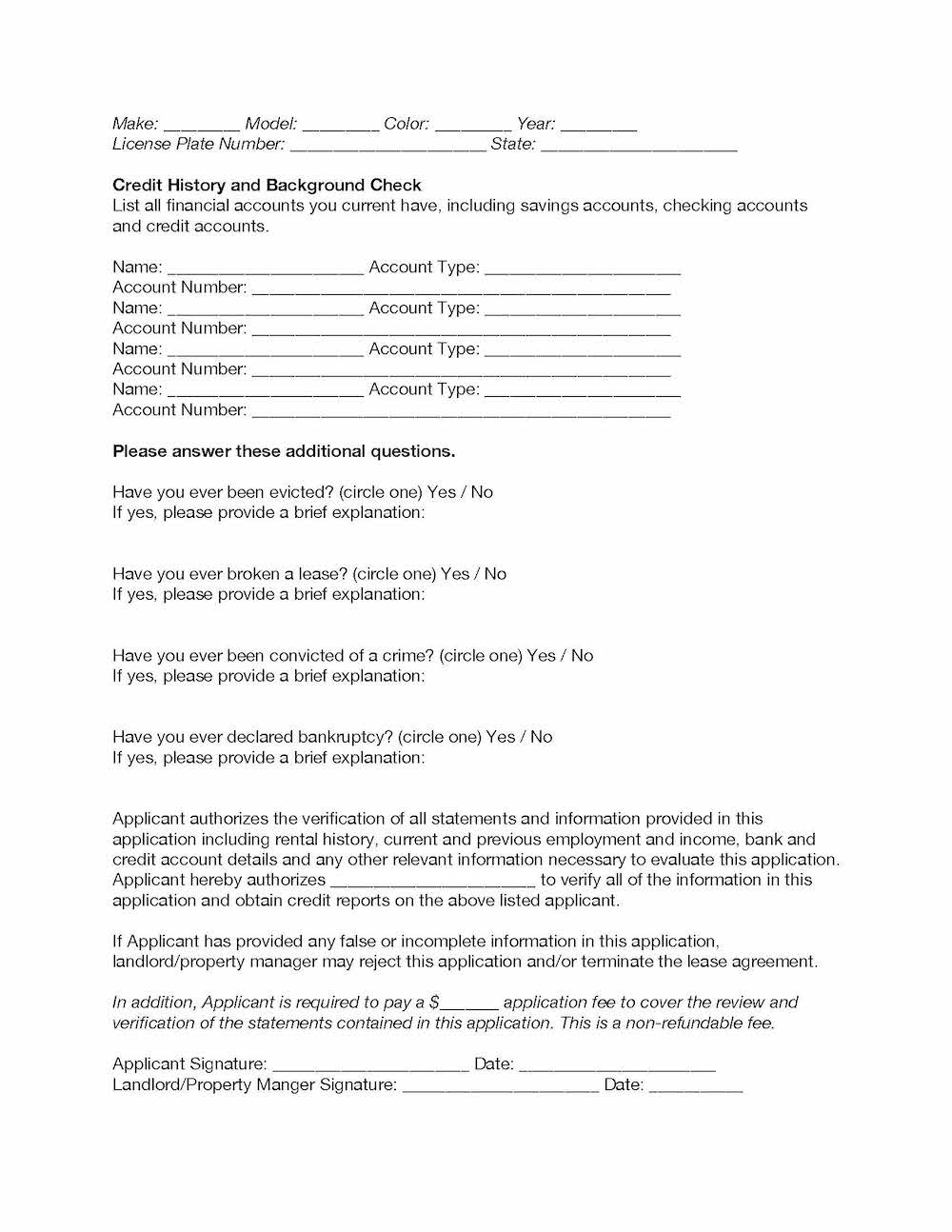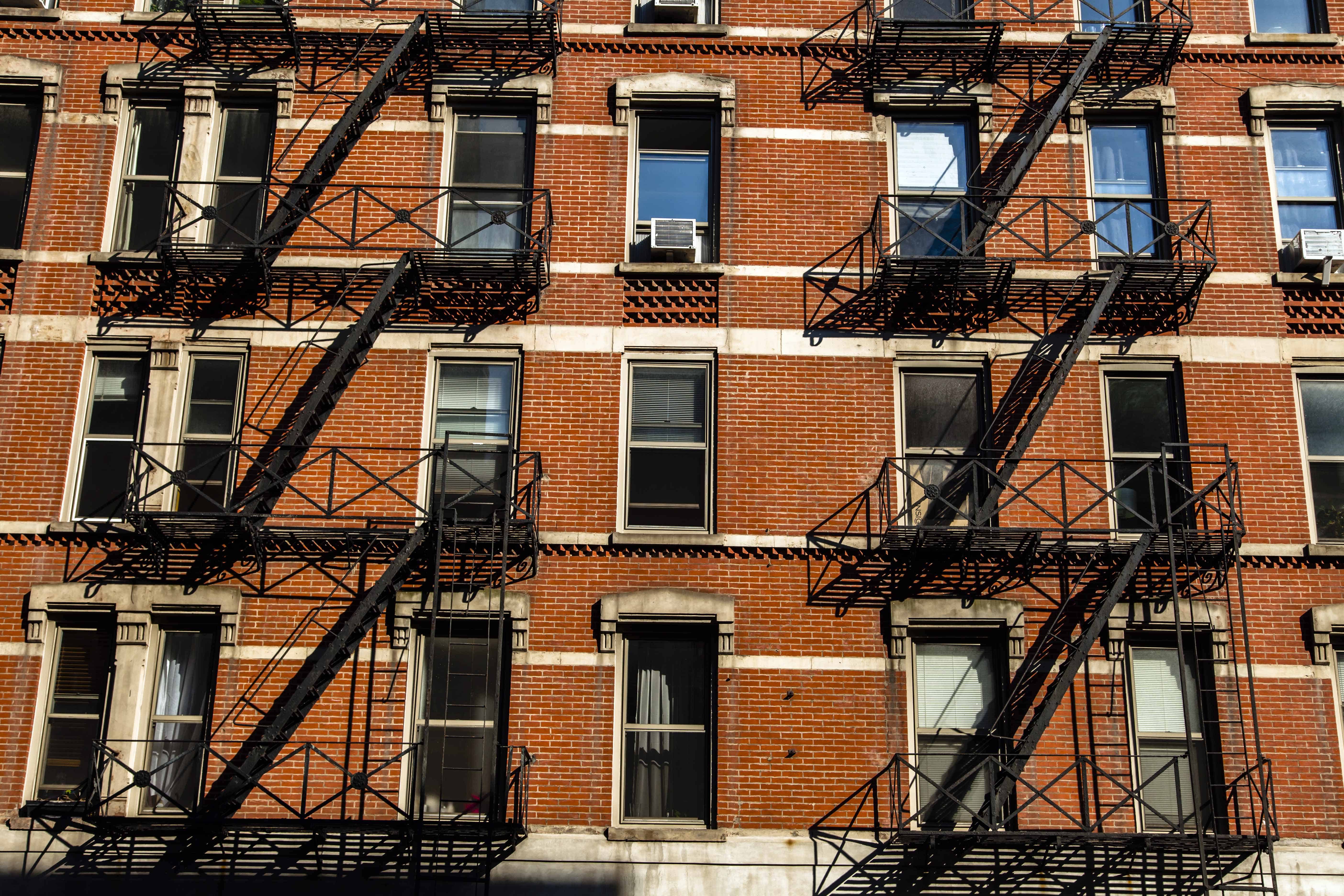During the tenant screening process, landlords often need to sift through tons of applications from potential renters. With so much competition, how do you make yours stand out?
One way is by knowing exactly what essential information to fill out so you can complete the application quickly and correctly. You don’t want to leave anything out and risk your application being delayed or rejected. There are only a few pages to give the landlord a complete picture of you and what you bring to the table as a tenant. You need to show them that you’re a responsible and honest tenant who won’t cause property damage or fall behind on rent. Knowing how to fill out an apartment application to rent an apartment lets you prepare ahead of time. The faster you get your completed, well-rounded application in, the faster you may be in your new home.
Everything you need to include on a rental application
All rental applications are going to look slightly different, from the formatting to how the different sections are organized. But all rental applications should cover the following complete information.
1. Personal and contact information
Typically, the first section on a rental application will be for personal and contact information from the prospective tenant. It’s also an easy section to complete before diving into the rest of the application.
There will likely be a section for the day’s date for you to fill in. Then you can move on the rest of the personal information about the applicant: you.
- Your full name
- Current address
- Phone numbers (include both your home and cell phone number)
- Email address
- Date of birth
- Social Security number
- Driver’s license number
If you don’t have a driver’s license, any kind of official, government-issued ID will do.
Other occupants
Most applications give you a section to add the name, age, and contact info for the other people you’ll be living with. But each person who is going on the apartment’s lease needs to fill out their own separate application with their own personal information. If you’re signing the lease with roommates or a partner, you’ll be submitting multiple applications.
This also helps the landlord follow proper health and safety laws and regulations in your area. They can’t have five people living in a one-bedroom apartment. It’s unsafe and against the law.
Know your rights
It’s also important to know what sensitive information a potential landlord legally cannot ask you. During the rental application process and listed on the rental application itself, you cannot be asked about:
- Race
- National origin
- Sex or sexual orientation
- Religion
- Disabilities
2. Apartment information
Some landlords may include sections or lines for information about the specific rental property or unit. This could include the address, unit number, size of apartment or square footage. But it also may cover monthly rent, upfront costs and pet fees (if applicable).
Oftentimes, the landlord can or will fill in this section themselves to avoid mistakes or errors. After all, they’re the landlord and know all the essential information about the unit. If you do have to fill out this section yourself, just be sure to double-check that all the details are correct. You can also ask the landlord to look it over for verification.
This way, both you and the landlord or property manager are on the same page about exactly which rental property or unit you’re interested in leasing.

3. Employment history
One of the most important sections of how to fill out an apartment application focuses on your employment history. After all, your prospective landlord wants to make sure you can pay the rent on time and in full each month.
In this section, add details about your current employer or work situation. Include information like your job title, work address and how long you’ve worked there. You’ll also want to provide contact information for your employer. Landlords and property managers typically contact employers to verify the employment of a potential applicant.
This section also includes one of the most essential pieces of info for landlords: your income. After all, you need to prove that you have a steady stream of income from some source so you can afford rent. Depending on the application, it may ask for your hourly rate, annual salary or monthly income. It may also ask if you’re part time or full time. As proof of income, you’ll need to provide recent pay stubs or bank statements as part of your application. Requesting two to three months of pay stubs or bank statements is the norm.
If you have a big savings account, you can also provide evidence of this. If you’re between jobs, just started somewhere new or are self-employed with a variable monthly income, having a good nest egg assures landlords. You can also provide more employment history by attaching your work resume. This is only a good idea if your previous work history reflects well on you. If you tend to leave jobs quickly or aren’t on good terms with former employers, it can hurt your case.
It’s also OK if you don’t have a previous employer or just started a new job. There are other ways you can prove you’d be a reliable, trustworthy tenant.
Other sources of income
If you have other sources of income apart from a routine job, you can also give that information to the landlord. Other sources of income can include:
- Inheritance
- Annuity
- Severance payment
- Unemployment
- Disability
- Social security
This can help bolster your claim that you make enough money each month to cover rent.
4. Rental history
Landlords want to ensure that a potential tenant is responsible and reliable. As such, nearly every rental application will have a section where you can fill out your residence history.
You usually only need to provide information about your last one or two rentals, including your current one. Add details about the address, the cost of rent and your move-in and move-out dates.
You’ll also need to list the contact information for current and previous landlords. References from past landlords are one of the best ways landlords vet potential tenants. For that reason, it’s always a good idea to stay on good terms with your previous landlord, because they become potential references once you move out. A good recommendation from a property manager or current landlord who liked you can go a long way. It shows you paid rent on time, took good care of the property and are an upstanding tenant.
If you don’t have any rental history, don’t worry. You can ask a family member or someone you trust to act as co-signer. Some applications may have a brief section where you can indicate if you’re having a co-signer or who they are. Otherwise, mention it to the landlord so they can loop the co-signer in and send them any relevant documents.
5. References
Along with the landlord references, some applications let you provide character references to vouch for you as a person. Professional and personal references from colleagues, friends or co-workers help verify that you’re a reliable person and help the landlord get a good sense of your character. Most landlords won’t accept references from family members. This section should ask for reference names and contact information.
Not every landlord requires or adds this. If they don’t, you can sometimes attach signed letters of reference directly to the application. You can also attach a rental cover letter or renter resume to add a little more depth.

6. Extra details
Not all rental applications will need these extra bits of information, as it depends on the rental property and landlord.
Emergency contact
Just in case, some landlords ask for emergency contact information upfront. If you’re approved, they’ll add it to your file later. It also comes in handy if they can’t get in touch with you during the rental application process.
List an emergency contact’s name, phone number and their relationship to you.
Pets
Lots of renters these days have pets, so you’re likely to see at least one reference to whether or not you have pets on a rental application.
If you do, the landlord usually asks for more background information about the animal such as breed and weight. That way, if they don’t allow the particular animal, they’ll let you know sooner and save you and themselves the trouble.
In addition to knowing how to fill out an apartment application, having a pet resume is a good idea for these situations. Similar to a work resume, it covers all the essential information a landlord would need to know about your pet. Add details like the pet’s name, species, breed, weight and gender. Make sure to include updated vaccine information as well.
Vehicles
If the apartment has on-site parking available and the rental unit has a parking space, you can provide your vehicle information upfront. List the make, model, color and year of each car, in addition to the license plate numbers.
Smoking
Many landlords have strict rules regarding smoking on their properties. If they do, they’ll likely have a small section asking if you smoke or not.
7. Credit and background check permission request
As part of how to fill out an apartment application, landlords need to run a background check and credit check on prospective tenants. There should be a specific section for you to sign, giving the landlord permission to run these checks.
Prior to the credit and background check section, you may also be asked if:
- You’ve ever been convicted of a crime
- Broken a lease
- Declared bankruptcy
- Been evicted
These are all potential red flags for renting, but don’t always mean an immediate “no.” Having a heads-up they’ll appear on the background check is helpful. It also shows the landlord that you’re honest about your past.

8. Bank information for the application fee
To cover the costs of running background checks and getting a credit report, most landlords and property managers charge application fees. These fees also cover any administrative costs incurred while processing the application. Within this section, list relevant information such as:
- Bank name
- Bank address and phone
- Bank account number
- Credit obligations (loans) with a monthly payment
Some applications will have a list of these fees. That way, you know what to expect.
9. Sign on the dotted line
Rounding out how to fill out an apartment application form is the signature section. Both you and the landlord should sign and date it. The signatures validate the document and serve as proof of payment.
This section wraps up the application. Congratulations, you’re done and have officially applied to a new apartment! Now comes the waiting to see if you beat out the other applicants and are the right tenant the landlord is looking for.
Completing the rental application process
After you’ve filled out rental applications with all the requested information, it’s time for you to sit back and wait to hear if your application has been accepted. During this time, the landlord does their screening reports. The tenant screening can take anywhere from two to three days. Sometimes it takes longer if it’s taking the landlord a while to verify some of your information.
Being accepted to your new apartment
Once you hear the good news that you’ve been accepted, you have a few final steps to follow before hiring movers.
Pay the security deposit and the first month of rent payments
As you finalize the rental process, you’ll need to pay for the security deposit, first month’s rent and any move-in fees.
Generally, writing personal checks is the easiest way to handle this transfer. But increasingly, modern-day renters prefer the ease and convenience of online portals. That way, they can pay rent, review the lease agreement, request maintenance repairs and more in one place.
Sign the lease
Once you’ve reviewed the lease and everything is in order, officially sign the lease to make the apartment yours (temporarily).
A rental application form template
To give you an example of what some apartment applications may look like, check out our sample template. You can also download this PDF or Word document template if you want to practice or get all the information in one place.



Know what to expect when filling out a rental application
Renting a new apartment can be a hassle. But by knowing how to fill out an apartment application, you can prepare in advance to help the process go smoothly and efficiently.














